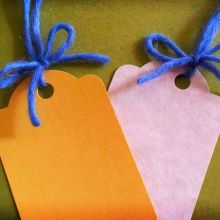Antibody labeling, or the attachment of a specific tag to an antibody to aid in detection or isolation/purification of a protein, is an important technique. Labeled antibodies are essential for immuno-based assays such as Western blots, ELISAs, flow cytometry, immunohistochemistry (IHC) and immunofluorescence (IF). Labeled antibodies are also used to isolate and purify a single protein from a complex mixture of proteins. Antibodies, like other proteins, can be labeled with small molecules, radioisotopes, enzymatic proteins and fluorescent dyes.
Traditionally, two different chemistries are commonly employed to label antibodies covalently with small molecules:
- The label is made reactive to primary amines and used to label lysine residues in the antibody molecule
- The disulfide bonds within the antibody chains are reduced and then reacted with a thiol-reactive label
However, newer methods have been developed that include the non-covalent addition of labels to the Fc portion of the antibody, or covalent addition of labels to the N-linked glycans of the antibody heavy chains.
The type of label used is dependent on the downstream applications. This guide will focus on non-radioactive labels for antibodies and their uses. A summary of the types of labels employed in different immunoassays is given below in Table 1.
Biotin
Biotin is a small molecule (244.3 Da) that forms one of the strongest non-covalent interactions found in nature with its binding partners, avidin (found in egg whites) and streptavidin (produced by the bacterium, Streptomyces avidinii). Due to its size, biotin rarely disrupts the activity of antibodies, making it a good choice for a label.
Used in Westerns, ELISAs, flow cytometry, immunofluorescence and immunohistochemistry, biotin-labeled antibodies are often employed to increase the sensitivity of an assay when an antigen is difficult to detect. Typically, blots or samples are incubated with biotin-labeled antibodies followed by a second incubation with avidin or streptavidin that is labeled with an enzyme or a fluorescent dye. Antibodies are often conjugated with multiple biotin molecules (3-6 molecules), leading to an amplification step that enhances detection of less abundant antigens. While the biotin tag can improve detection, it can be difficult to use for isolation/purification of proteins as the strong interaction between biotin and (strept)avidin can be difficult to disrupt.
Many companies sell kits for biotinylation that contain reactive biotin molecules for easy labeling of proteins. Typically, antibodies are labeled on the ε-amino groups of lysines through the use of a N-hydroxy-succinimide ester of a biotin analog. Biotin is attached to proteins using a spacer arm of at least 6 atoms to prevent steric hindrance during downstream manipulations. Spacer arms can vary in length and composition for optimization of assays.
Enzyme reporters
Traditionally, the most frequently used antibody labels for Westerns, ELISAs and IHC are enzyme reporter labels. Enzyme labels are larger than biotin, however, they rarely disrupt antibody function. The most commonly used enzyme labels are horseradish peroxidase (HRP), alkaline phosphatase (AP), glucose oxidase and β-galactosidase.
To use enzyme-labeled antibodies, samples are incubated with an enzyme-specific substrate that is catalyzed by the enzyme to produce a colored product (chromogenic assays) or light (chemiluminescent assays). Each enzyme has a set of substrates and detection methods that can be employed. For example, HRP can be reacted with diaminobenzidine to produce a brown-colored product or with luminol to produce light. In contrast, AP can be reacted with para-Nitrophenylphosphate (pNPP) to produce a yellow-colored product detected by a spectrophotometer or with 5-bromo-4-chloro-3-indolyl phosphate (BCIP) and nitroblue tetrazolium (NBT) to produce a purple colored precipitate. Color producing assays are useful for Western blots, ELISAs and IHC, while light-producing reactions are most frequently used in Westerns. Many substrates with varying sensitivities and outputs are available for detection, making enzyme reporters one of the most popular antibody labels.
Although reporter enzymes are also conjugated to ε-amino groups of lysines, additional chemistries may be employed as the enzymes contain lysines and have the potential to multimerize. Enzyme-labeled secondary antibodies are widely available through multiple companies, while other companies sell kits for labeling antibodies in the lab.
Fluorescent tags
The use of fluorescently-labeled antibodies is steadily increasing in the lab. Since fluorescent dyes are directly conjugated to the antibody, no enzyme/substrate or binding interactions are required for detection. Therefore, the amount of fluorescent signal detected is directly proportional to the amount of target protein in the sample. Fluorescent labels are used in fluorescent Western assays, flow cytometry and IF and can be used for highly quantitative assays.
To detect a fluorescent label, an instrument is required that emits a specified wavelength of light that excites the fluorochrome. The fluorescent dye then emits a signal in a different wavelength. The same instrument contains appropriate filters for detecting the emission from the fluorochrome. Flow cytometry requires the use of a flow cytometer, while IF uses a fluorescent microscope. A digital imaging system is usually employed for Western blots. Antibodies can be labeled with a variety of fluorescent dyes with varying excitation and emission spectra. In addition to being highly quantitative, fluorescent labels give the distinct advantage of being able to multiplex, or detect two or more different target proteins at the same time, through the use of dyes with non-overlapping emission spectra.
For labeling, fluorescent tags can be covalently attached to antibodies through primary amines or thiol groups. Fluorescently-labeled antibodies can be purchased from many companies, or commercial kits are available for labeling of antibodies in the lab.
Like this post? Read more in our Wiki and subscribe to our blog updates.
Table 1: Labels Used for Different Techniques
| Technique | Label |
|---|---|
| Flow cytometry | Fluorescent |
| Western blot | Reporter enzyme, biotin, fluorescent |
| ELISA | Reporter enzyme, biotin |
| IHC | Reporter enzyme, biotin |
| IF | Fluorescent |
Photo courtesy of Allison McDonald.


